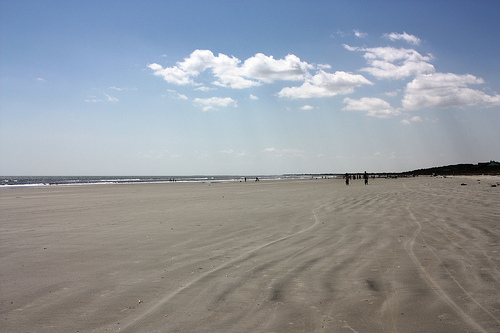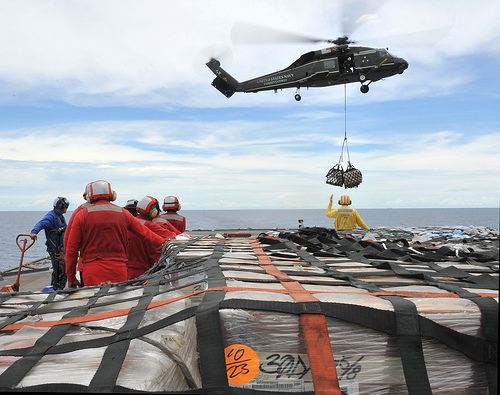 On my most recent trip to North Captiva Island, I had the opportunity to go on a turtle walk with a conservationist volunteer who is responsible for reporting on sea turtle nests. It was a fascinating fact finding experience. We started before sunrise and walked for approximately 3 hours investigating turtle nests and crawls. This is what I learned.
On my most recent trip to North Captiva Island, I had the opportunity to go on a turtle walk with a conservationist volunteer who is responsible for reporting on sea turtle nests. It was a fascinating fact finding experience. We started before sunrise and walked for approximately 3 hours investigating turtle nests and crawls. This is what I learned.
Each summer from May through August, something wondrous happens along our beaches: An ancient mariner, the loggerhead sea turtle, leaves the water during the night and crawls ashore in North Captiva Island to lay her eggs in a sandy nest.
The task of excavating a nest may take her over an hour to accomplish. The turtle – weighing several hundred pounds – laboriously digs a nest cavity with her rear flippers.

Turtle nest
She then deposits approximately 100 pliable ping-pong ball sized eggs into the chamber, covers them with sand and returns to the sea.
After roughly a two-month incubation period, a cluster of tiny hatchlings emerges from the sand and scrambles to the Gulf. Unfortunately, their sea-finding ability can be disrupted by lights from buildings and streets. Confused, the hatchlings wander inland and are crushed by vehicles or die from heat exhaustion in the sunlight.
Loggerhead Turtle Facts:
- Loggerheads are air-breathing reptiles, scientific name Caretta caretta
- The common name refers to the turtle?s large head
- Loggerheads are the most common sea turtles in Florida.
- Weighing 250 – 400 pounds, adults can grow to more than three feet in length.
- Hatchlings are two inches long.
- Nesting occurs from May through August. Hatching may extend through October.
- The nest cavity is 18 – 22 inches in depth.
- Incubation period of the eggs in their sandy nest is 55 – 65 days.

turtle tracks
Danger of Extingtion
Most adult loggerhead turtles nest every other year or every third year, laying several clutches of eggs during a nesting season. Only a small percentage of hatchlings survive to maturity! Loggerhead turtles have existed on Earth for millions of years with little serious threat to their survival – until recently. Pollution, lighted beaches, loss of nesting habitat, drowning in shrimp nets and other fishing gear have contributed to the drastic decline of these and other sea turtles.

 “I met up with a blue-footed booby standing smack in the middle of the footpath. It made no offer to step aside and let me pass. Looking into its birdy eye, I saw . . . nothing at all. No fear, but also no aggression. No anxiety, affection, hope, recognition. Its indifference was profound, as if I were invisible, although I’d been told that if I did step too close it might jab at me with its beak. This strange fearlessness can’t be explained by any local history of kindness on the part of man. Even Darwin killed birds and ate tortoises. The blue-footed booby wasn’t afraid of me, but the name for this is not tameness. It’s genetic innocence. Since the animals evolved in the absence of man, their innocence exists at a molecular level. I saw it again in the eye of an albatross just before it turned to begin its mating dance; I saw it in the stare of a sea lion nursing her pup on the beach. The animals felt nothing for people one way or the other, yet all around them were people, including me, in love with the animals.”
“I met up with a blue-footed booby standing smack in the middle of the footpath. It made no offer to step aside and let me pass. Looking into its birdy eye, I saw . . . nothing at all. No fear, but also no aggression. No anxiety, affection, hope, recognition. Its indifference was profound, as if I were invisible, although I’d been told that if I did step too close it might jab at me with its beak. This strange fearlessness can’t be explained by any local history of kindness on the part of man. Even Darwin killed birds and ate tortoises. The blue-footed booby wasn’t afraid of me, but the name for this is not tameness. It’s genetic innocence. Since the animals evolved in the absence of man, their innocence exists at a molecular level. I saw it again in the eye of an albatross just before it turned to begin its mating dance; I saw it in the stare of a sea lion nursing her pup on the beach. The animals felt nothing for people one way or the other, yet all around them were people, including me, in love with the animals.”


